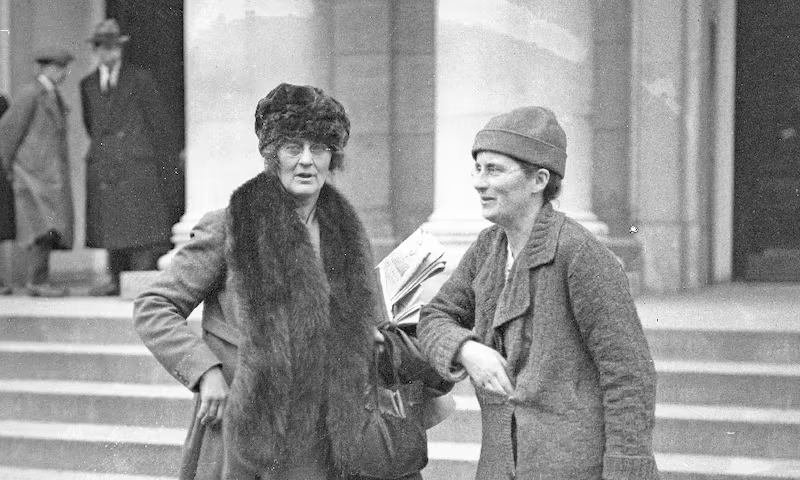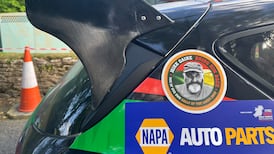In December 1918, while the votes in the general election were still being counted, Sir Henry Robinson, a senior official in the Irish administration, made a remarkable prediction. Henceforth, he said, it was to be “a fair and square fight between the Irish Government and the [sic] Sinn Féin as to who is going to govern the country”.
This was a perceptive assessment of how dramatically the war had transformed the political situation in Ireland.
When war broke out in 1914, Sinn Féin – though it had some representation in local government – had been unable to contest a parliamentary election. In December 1918 it practically annihilated the Irish Parliamentary Party, which had dominated Irish politics since the 1880s and had apparently achieved in 1914 its long-sought goal of a Home Rule Act. In January 1919 those Sinn Féin MPs who were then at liberty assembled in Dublin as Dáil Éireann, and declared Ireland an independent republic.
0 of 4

Just what the Sinn Féin landslide really signified, what the party really stood for, would remain something of a puzzle. Sinn Féin had defined itself primarily against the Home Rule policy – not just in terms of its ultimate objectives (though it was certainly a "separatist" movement, its founder Arthur Griffith advocated a dual monarchy rather than republican independence), but also in terms of the pathway there – through Irish organisation rather than British legislation. The self-sufficiency advocated by the great Italian nationalist Mazzini was directly incorporated in Sinn Féin's name – "ourselves". This of course called for a far more intense popular mobilisation than merely turning out to vote in parliamentary elections.
Its embrace of civil resistance rather than violent insurrection distinguished it from the Fenian republican tradition, embodied in the Irish Republican Brotherhood, with its insistence that only physical force could be effective (and indeed appropriate) in securing freedom. But by 1914 the distinction had been largely blurred, not least through the establishment of the Irish Volunteer militia.
After the 1916 rebellion – initiated by the IRB but widely labelled “Sinn Féin” – Sinn Féin and Volunteers had been re-founded together, and there was some colour to the republican view that the 1918 election was an endorsement of Volunteer, as much as Sinn Féin, policy.
At this point the party had two distinct strategies, international and internal, to secure the kind of freedom it sought.
As the year 1919 dawned, the international strategy was most prominent – the idea, endlessly reiterated, that the peace conference would recognise Ireland’s claim to independence. The key actor here was expected to be the US, not unreasonably since the Fourteen Points for the postwar settlement drawn up by its president centred on the concept of national self- determination as the key to a peaceful global order. Sinn Féin idealism perhaps blinded it to the deep unlikelihood that any of the powers, the US included, would use this to override the wishes of Britain.
In accordance with this belief, Éamon de Valera, the president of Dáil Éireann – routinely, if mistakenly, called “President of the Irish Republic” – left Ireland for what became an almost two-year tour of America as soon as he was sprung from jail. Though he may have helped with fund-raising, he failed even to unite the Irish-American community, let alone to secure US recognition of the republic. Sean T O’Kelly, sent to Paris as republican ambassador, equally failed to get the peace conference to take up the Irish claim.
Sinn Féin’s internal strategy rested on ideas of civil resistance which had been elaborated over a long period before 1919. Ten years previously, party organiser Bulmer Hobson advocated tax strikes as well as boycotts to neutralise the power of the British state in Ireland. The complex administrative and fiscal structures of modern states were, he argued, a source of strength, but their dependence on public co-operation made them vulnerable. In 1919 the existence of a self-declared national assembly, with a national government, allowed republicans to start constructing a counter-state that could compete head-on with the British government for legitimacy. How effective – rather than merely declaratory or symbolic – this counter-state needed to be was an interesting issue.
The new republic was a one-party state, and the prominence of Irish Volunteers among Dáil members led Sinn Féin's Darrell Figgis to call it "less a house of consideration than a regiment of battle".
In any case the business of constructing a new state was far from straightforward. Sinn Féin's vision of Ireland was more revolutionary than that of the old Home Rule party, but in terms of political economy most party members were on the right rather than the left – Griffith himself advocated a capitalist autarchy and saw socialism as inimical to nationalism. The Irish Labour Party was not represented in the Dáil – it had put up no candidates in 1918 – but the third of the founding deeds of the assembly, the Democratic Programme, was drafted by Labour leadership. Would its commitments significantly shape the new State? Even after its commitment to social ownership had been toned down by Sinn Féin (by Sean T O'Kelly), it remained unattractive to traditional nationalists. The IRB instructed its president, Michael Collins, to strangle the programme before the Dáil met, though he did not. It certainly went some way beyond anything Sinn Féin had proposed in its electioneering, and whatever the IRB's motives, it may have been right that it would not be an asset in bidding for public support in the forthcoming contest.
What was to be billed as “the constructive work of Dáil Éireann” was inevitably constrained by the circumstances. Cabinet ministers were of variable administrative quality, and were often to be on the run, while the handfuls of civil servants were working from transient offices.
As at other crucial junctures in Anglo-Irish relations, the success of the republican project depended in part on Britain’s reaction. It was perhaps too late for even a rapid revival of the Home Rule policy to gather public support in Ireland, but the government was markedly slow to accept that the end of the war must bring the suspended 1914 act into operation.
The political aspect of the Home Rule commitment had changed. Not only was the Lloyd George administration, a coalition of Liberals and Conservatives, very different from the Asquith government of 1914, but other things had changed as well. The biggest alarm raised by the 1916 rebellion – the spectre of German intervention in Ireland – was deployed as late as April 1918 to justify a repressive policy, and the rebellion had made the idea of excluding all or part of Ulster from Home Rule, in 1914 still uncertain, an absolute certainty.
The default position of British policy in Ireland had always been an unstable combination of “coercion and conciliation”.
In 1919 the conciliatory part was slow to emerge. It would be more than a year before the deliberations of the British cabinet's Irish committee would take formal shape as a new Home Rule Bill to be put before parliament. The coercion that occupied the interim was, however, at best (or worst) half-hearted. The armed police, the Royal Irish Constabulary, found no effective response to the public boycott launched early in 1919, and the RIC's inspector general – who had no faith in repressive action – was increasingly at odds with the hawkish viceroy, Lord French. The British army, in the throes of rapid demobilisation, had little capacity to counter a nascent insurgency. Military and police intelligence organisations were ineffective.
Cathal Brugha, acting president of the Dáil in January 1919 (later minister for defence) instructed the new TDs that "we are done with England", but the Dáil did not actually declare war, and would not go on to take responsibility for the military actions of the Volunteers until 1921.
It was the Volunteer's house journal, An tÓglach, which had effectively declared war in mid-October 1918; it had also warned that a British attempt to impose conscription could not be opposed by the "passive resistance" advocated by Sinn Féin but would require martial law and military government by the Volunteers. (Its title phrase, "don't argue, but shoot!", might well have been penned by Mussolini.) This latent militarism could become an issue later. The Volunteers who launched the military campaign with the attack at Soloheadbeg on the day of the Dáil's first meeting did so on their own initiative, to force the hand of the politicians. This created a quirky, and possibly contradictory, system of strategic planning and control.
In the wake of Soloheadbeg, the campaign could take many different forms and directions. All that was clear was that – at least while de Valera was in America – the advocates of “hedge-fighting”, guerrilla warfare, who had been ignored by the 1916 headers, would now have their day.

























